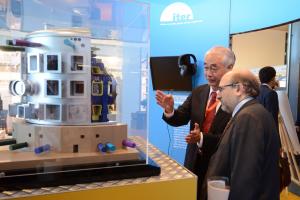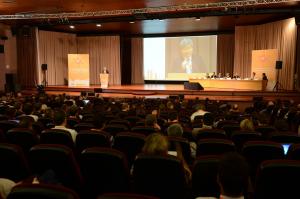A peep into the future
Last week, 16-20 September, the fusion community convened in Barcelona, Spain for the International Symposium on Fusion Nuclear Technology (ISFNT). More than 750 participants gathered at the Palau de Congressos to be brought up to date on developments in the field of fusion technology and materials and on the construction of ITER—the "symbol and example of global cooperation to tackle a global energy problem," according to Pere Torres, Secretary of Enterprise and Competitiveness of the Generalitat de Catalunya, as he opened the symposium.
The ISFNT is recognized as one of the main international gatherings on fusion energy with a clear focus on reactor-relevant technology. In its 11th edition last week, the symposium took a close look not only on the current state-of-the-art technology related to ITER, but also dared to look forward to the possible design, requirements and safety aspects of future DEMO reactors and power plants.
Dedicated workshops addressed future reactor-relevant technologies such as ceramic breeder blankets or the treatment of beryllium; a half-day industrial workshop was set up to provide companies with updated information on the current procurement status of ITER and forthcoming opportunities; no less than 161 posters gave lots of opportunity to exchange and connect. And this is what the ISFNT is all about. In the words of Pere Torres, "This event contributes to the collaboration amongst researchers and allows for the sharing of knowledge."
The conference closed with a presentation by South Korea as host to the next ISFNT from 14-18 September 2015 on the island of Jeju.



